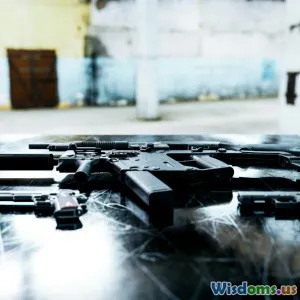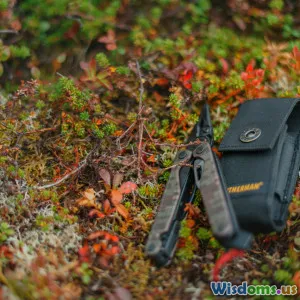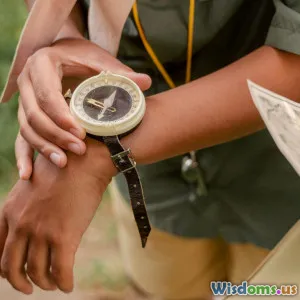
How to Improvise Weapons Using Everyday Items for Self Defense
6 min read Learn to create effective self-defense weapons from everyday items with practical tips and real-world examples. (0 Reviews)
How to Improvise Weapons Using Everyday Items for Self Defense
In an unpredictable world, personal safety is a priority for many. While carrying traditional weapons or relying on specialized tools is not always feasible or legal, knowledge of how to use everyday items as improvised weapons can provide a critical edge in self-defense situations. Whether you find yourself alone on a late-night walk or caught off guard in your home, being able to adapt what’s around you as a deterrent or defensive tool can mean the difference between harm and safety.
Understanding the Basics of Improvised Weapons
Improvised weapons are ordinary objects that, when wielded creatively, can mimic the function of dedicated defensive tools. Their effectiveness depends on accessibility, ease of handling, and the ability to leverage force quickly and accurately.
Why Improvise?
- Accessibility: Items like keys or a pen are almost always within reach.
- Legality: In many regions, carrying traditional weapons may be illegal; improvised defenses often skirt this restriction.
- Surprise Factor: An assailant may underestimate your capability if you use unexpected objects.
According to a study by the Journal of Interpersonal Violence (2020), improvised weapons are prevalent tools in self-defense incidents precisely because of their availability and immediacy.
Everyday Items That Double as Weapons
1. Keys
Your keys, especially when held between fingers like brass knuckles, can increase the impact of a punch. The pointed edges can help break the assailant’s skin upon contact.
Practical tip: Hold your keys with the key tips protruding past your knuckles and strike sensitive areas like the nose or throat.
2. Pens and Pencils
Metal or plastic pens can serve as stabbing tools to target vulnerable spots if necessary. Tactical pens are specially designed for this, but even a sturdy ballpoint pen can serve the purpose.
Real-world insight: Police officers sometimes use pens in defensive tactics due to their discreet and effective form.
3. Scarves and Belts
Scarves can be used to choke or disarm an attacker by wrapping around wrists or necks. Belts with buckles can strike or be used similarly for entanglement.
Example: Krav Maga self-defense techniques utilize scarves for binding and trips.
4. Cell Phones
Modern phones, besides communication, can function as blunt instruments. The hard edges and weight of a smartphone can incapacitate an attacker when used to strike vulnerable areas such as the temple or jaw.
Note: Avoid damaging your phone if possible.
5. Umbrellas
A sturdy closed umbrella resembles a baton, perfect for jabbing or striking. Its length keeps attackers at a distance.
6. Books and Magazines
The solid thickness of a hardback book can provide a shield and can be swung to cause impact.
How to Use Improvised Weapons Effectively
Target Vulnerable Areas
Understanding human anatomy enhances self-defense effectiveness. Focus on:
- Eyes
- Throat
- Solar plexus
- Knees
An effective strike to these areas with an improvised item can create an opportunity to escape.
Maintain Control and Safety
Using an object in a defensive situation requires practice. Awareness of your environment and avoiding self-injury are paramount.
Training and Practice
Impromptu weapons require familiarization. Train safely by:
- Practicing grip and swings on soft targets
- Learning martial arts techniques (e.g., Krav Maga, which emphasizes using daily items)
Legal and Ethical Considerations
Improvised weapons should be used strictly for self-defense, not aggression. Laws vary, so understanding local regulations about self-defense is critical.
Expert legal advice often states: “Self-defense is justified only when the threat is imminent and reasonable force is used.” Improvised weapons, although seemingly harmless, can be lethal.
Real-Life Stories and Expert Opinions
Case Study: New York Subway Incident
An individual used a heavy umbrella to fend off an aggressor, gaining enough time to escape and notify authorities. The umbrella’s length and firmness were key assets.
Expert Quote
Renowned self-defense trainer Massad Ayoob explains, “The best weapon in self-defense is your brain. Improvised weapons simply extend your ability to protect yourself when nothing else is available.”
Conclusion
Improvising weapons using everyday objects is an invaluable skill that bolsters personal safety. By understanding the potential of items like keys, pens, or umbrellas, and applying strategic defensive principles, anyone can improve their chances of protecting themselves without needing specialized equipment.
Empowerment through knowledge reduces fear and increases confidence. Remember to practice safely, respect legal boundaries, and always prioritize escape over confrontation when possible. Preparation today can make all the difference tomorrow.
Rate the Post
User Reviews
Popular Posts

















